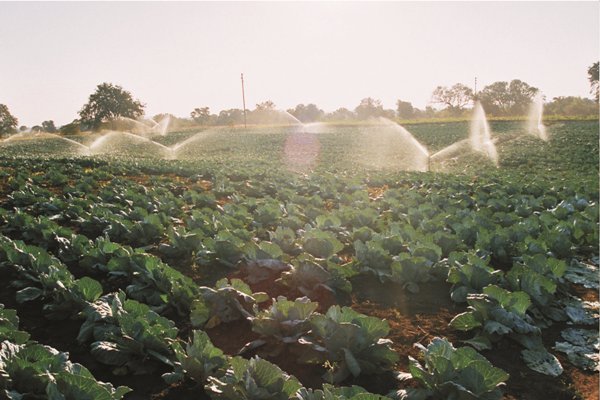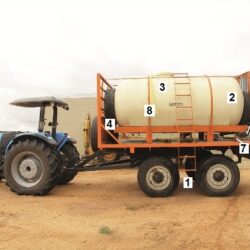It is the end of the rainy season, and some farmers have to turn to irrigation to supply their crops with enough water. It is essential to plan carefully before installing or even buying an irrigation system.
There are 6 factors to consider, in order to make decisions about how to irrigate and what type of irrigation system to use.
1. WATER QUANTITY AND QUALITY
Quantity – Is there enough water available to cater for the crop’s requirements?
Quality – What is the quality of the water? This info is needed before planning the garden as water quality could influence the soil and/or crop.
Purity – Blocked sprinklers, drippers and pipes can cause major problems, so if the water is not pure, a filter should be installed (especially with drip irrigation).

2. SOIL
Infiltration rate – The application rate of irrigation should not be higher than the infiltration rate of the soil, as this will waste water as a result of run-off.
Moisture content and depth – Consider the water-holding capacity of the soil. Clay soils can retain much more water than sandy soils, so sandy soils should therefore be irrigated less, but more frequently.
Slope – Furrow irrigation requires a gradient to ensure water flow.

3. CROPS
Irrigation scheduling (application quantity and frequency) should be calculated according to the specific needs of each crop, and take into account the root depth.
4. CLIMATIC CONDITIONS
Wind – Strong winds can influence the distribution of applied water (especially in overhead irrigation systems) as well as increase evaporation of applied water.
Temperature – High temperatures are usually related to increased water usage by plants, as well as increased water losses to evaporation.
5. MAINTENANCE
Irrigation systems need regular maintenance. The complexity of the task, how much labour is needed to perform these tasks, the cost of equipment and spare parts, the frequency of maintenance operations and the availability of technical support can determine the viability of a system.





